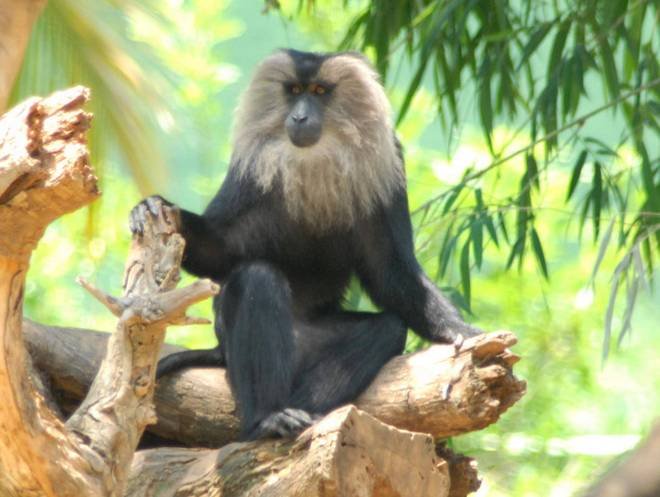
The lion-followed macaque in Malayalam, or the wanderoo, is an Old World monkey endemic toward the Western Ghats of South India.The hair of the lion-followed macaque is dark. Its exceptional trademark is the silver-white mane which encompasses the head starting from the cheeks to its jaw, which gives this monkey its German name Bartaffe - "facial hair primate". The smooth face is dark in shading. With a head-body length of 42 to 61 cm and a weight of 2 to 10 kg, it positions among the littler macaques. The tail is medium long at around 25 cm, and has a dark tuft toward the end that is like a lion's tail, despite the fact that this tuft is more articulated in guys than in females.
Incubation is roughly a half year. The youthful are breast fed for one year. Sexual development is come to at four years for females, and six years for guys. The future in the wild is roughly 20 years, while in imprisonment is up to 30 years.
The lion-followed macaque is a diurnal rainforest tenant. It is a decent climber and spends a greater part of its life in the upper covering of tropical clammy evergreen timberlands. Not at all like different macaques, it maintains a strategic distance from people. In gather conduct, it is much similar to different macaques; it lives in various leveled gatherings of as a rule 10 to 20 creatures, which comprise of couple of guys and numerous females. It is a regional creature, guarding its zone first with uproarious cries towards the attacking troops. On the off chance that this turns out to be unproductive, it fights forcefully.
Lion-followed macaque conduct is described by regular examples, for example, arboreal living, specifically nourishing on an expansive assortment of natural product trees, substantial interindividual spaces while scrounging, and time spending plans with high extent of time gave to investigation and feeding.[5] It principally eats indigenous organic products, leaves, buds, creepy crawlies and little vertebrates in virgin backwoods, yet can adjust to fast ecological change in zones of huge particular logging through behavioral alterations and expanding of sustenance decisions to incorporate natural products, seeds, shoots, essence, blooms, cones, mesocarp, and different parts of numerous nonindigenous and pioneer plants.[5] In the woods of Kerala they were watched going after settling and eggs of pigeons.
correct